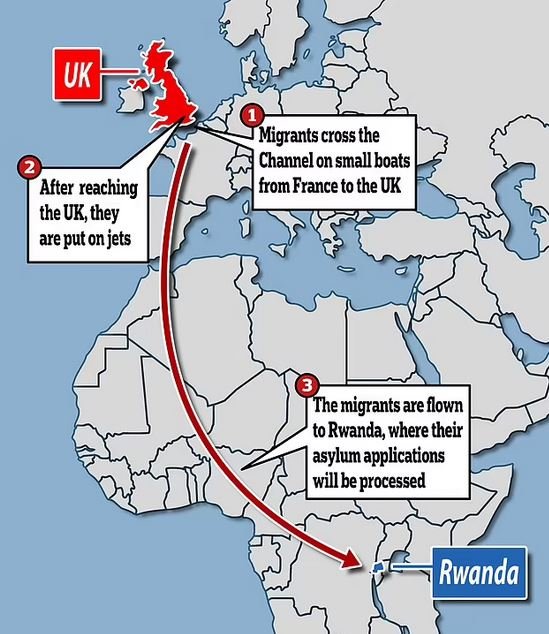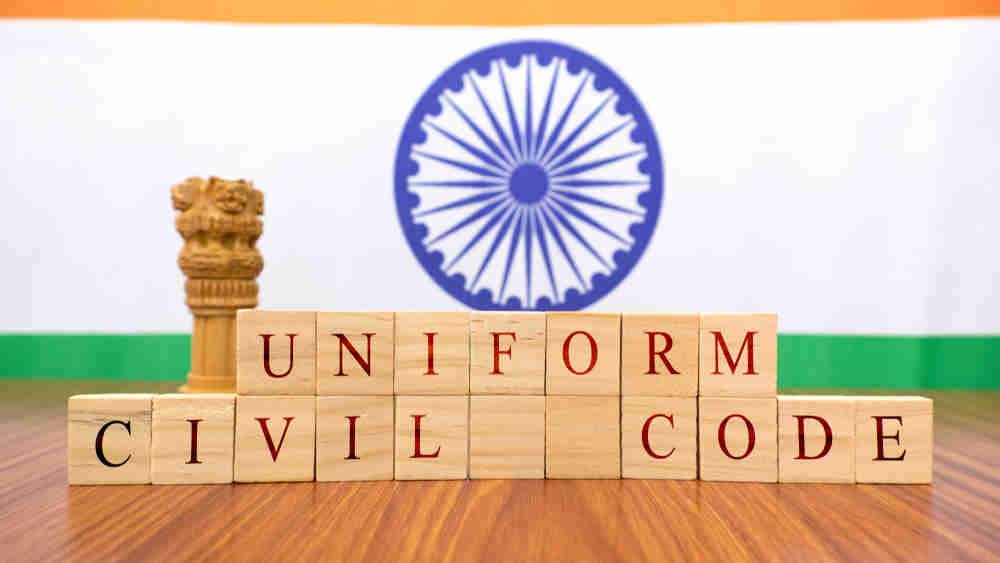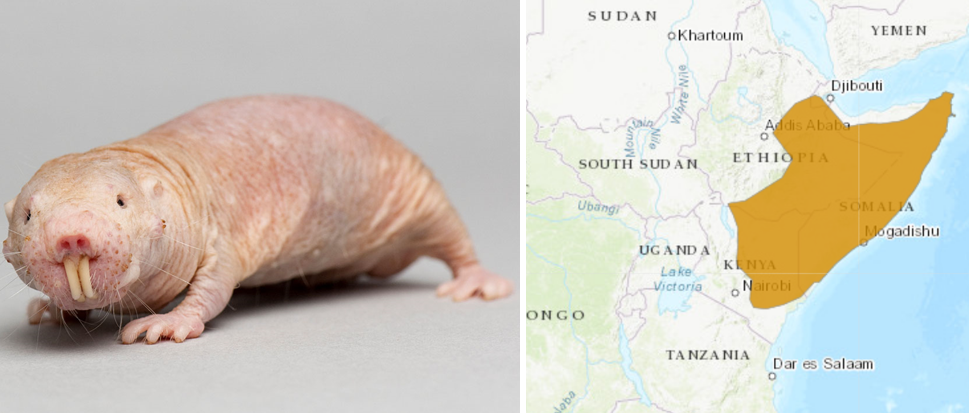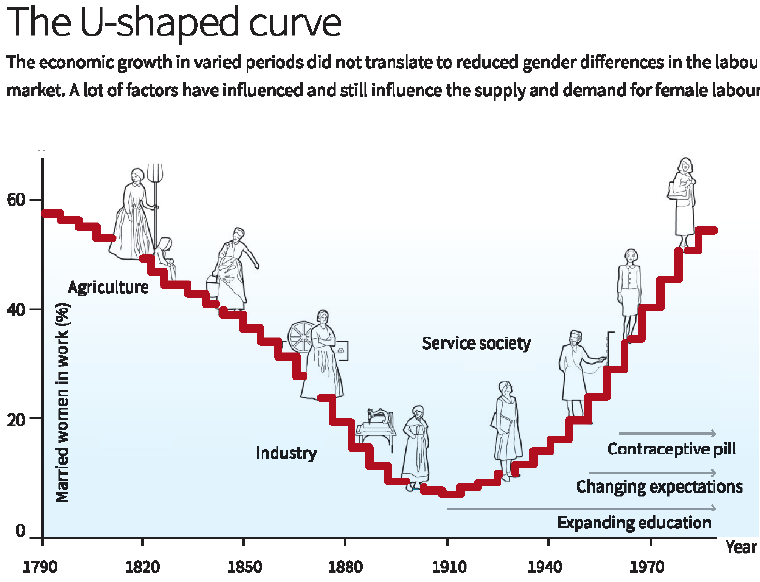
Current Affairs February 29, 2024: Karnataka Temple Bill, Patanjali banned from Marketing of Products, SWAYAM Plus Portal, Need for Regulating AI, Obelisks, Mushrooms into Gold Nanoparticles, Baleen Whales, Belgium recognises Ecocide
Subscribers of "Current Affairs" course can Download Daily Current Affairs in PDF/DOC
Subscribe to Never Miss an Important Update! Assured Discounts on New Products!
Must Join PMF IAS Telegram Channel & PMF IAS History Telegram Channel
{GS2 – Governance – Laws} Karnataka Temple Bill
- Context (IE | IE | TP): The Karnataka Hindu Religious Institutions and Charitable Endowments (Amendment) Bill, 2024, regulating the taxation of Hindu temples, was rejected by the Legislative Council.
- The Bill aims to change various sections of the Karnataka Hindu Religious Institutions and Charitable Endowments Act, 1997.
- There are around 35,000 temples under the Muzrai Department (The Department of Religious and Charitable Endowments), categorised as-
- Group A: Income > Rs 25 lakh per year– contributes 10 per cent of the revenue generated from collection boxes to a Central Fund.
- Group B: Rs 5 lakh ≥ Income ≤Rs 25 lakh– contributes 5 per cent of the revenue generated from collection boxes to a Central Fund.
- Group C: Income < Rs 5 lakh– No Contribution.
Amendments introduced in the Bill
- To allocate “10% of the gross income of institutions earning over Rs 1 crore annually” to a common pool.
- Current rule: 10% of the net income of institutions earning over Rs 10 lakh annually to a common pool.
- Net income is what remains after deducting expenses from the temple’s earnings, while gross income represents the total amount of money the temple earns.
- To allocate 5% of the earnings of institutions making between Rs 10 lakh and Rs 1 crore to the common pool, altering the prior income range from Rs 5 lakh to Rs 25 lakh.
- The Bill proposed to include, among the committee of management, one person ’skilled in Vishwakarma Hindu temple architecture and sculpture’.
- Under Section 25, temples and religious institutions are required to form a “committee of management” consisting of nine people, including a priest, at least one member of an SC or ST, two women, and one member of the locality of the institution.
|
- The Bill also gave the Rajya Dharmika Parishat the power to appoint the chairman of these committees.
- The Rajya Dharmika Parishat is a body appointed by the state government that is empowered to make decisions on a variety of subjects related to religion, which includes-
- Religious disputes over practices and customs,
- whether a temple is a “composite institution” by allowing religious worship besides Hinduism,
- Whether a temple is private, public or denominational and
- Whether a person is a hereditary trustee of a religious institution by virtue of succession.
- The state government will create district-level and state high-level committees to oversee infrastructural projects facilitating pilgrimage to the temple.
Accusation- By Opposition
- The Karnataka government is trying to “steal” from temples and questioned why only Hindu temples were singled out.
Counter- By Government
- The increased funds would be used to support poorer temples, provide benefits to sick priests, and offer scholarships for the children of priests’ families.
How do other states manage temple income?
Kerela
- In Kerela, temples are often managed by state-run Devaswom (temple) Boards.
- These boards are managed by government-appointed nominees, many of whom are politicians.
- Each Devaswom Board receives a budget from the state government and is not obliged to disclose revenue figures.
Tamil Nadu
- The Hindu Religious and Charitable Endowments (HR&CE), 1959, is the governing law on the administration of Hindu temples and religious institutions.
- In 1971, Section 55 of the HR&CE Act was amended to abolish hereditary priesthood.
- Removal of caste-based discrimination: In 2006, the amendment provided for the appointment of sufficiently trained Hindus, irrespective of their caste, as archakas to Hindu temples.
What is the history of the regulation of temples by the State?
- In 1927, the Justice Party enacted the Madras Hindu Religious Endowments Act, 1927.
- In 1950, the Law Commission of India suggested that a law be passed to check the misuse of funds and properties of temples.
- The TN HR&CE Act was enacted, but its constitutional validity was challenged before the SC.
- In the landmark Shirur Mutt case in 1954, the SC upheld the overall law except for some provisions, which led to a revised TNHR&CE Act in 1959.
- The Orissa Hindu Religious Endowments Act of 1939 was struck down by the SC twice in 1954 and 1956.
British legacy
|
What is the need for government regulation?
- Recommendation: In 1960, the GOI formed the Dr. C. P. Ramaswami Aiyar Commission to investigate issues related to Hindu Public Religious Endowments.
- Constitutional authority: The framers of our Constitution granted states limited control over religious matters through Article 25(2).
|
- Against discrimination: The Dravidian movement ensured that people belonging to backward classes were given the right to walk on the roads adjoining the Shiva temple in Vaikom.
- It resulted in the promulgation of the Travancore Temple Entry Proclamation of 1936.
- Temple Reforms: Kerala and Tamil Nadu have seen significant reforms within Hindu temples that have led to the appointment of woman odhuvar (singer of hymns) and persons from backward classes as archakas (priests).
- Transparency: The Integrated Temple Management System digitises temple records to ensure transparency and accountability in temple administration.
- Other initiatives taken: Setting up institutes for training archakas, converting jewellery given as donations into gold bars, expediting evictions in cases of land encroachments, etc.
- The most fundamental criticism against the release of Hindu temples from government control to the society is:
- To whom will the temples be handed over to?
- Will it not perpetuate class hierarchies?
- Sovereign control of temples is justified on the grounds that Hindu temples were supervised and managed by kings.
What are the criticisms against the state control?
- Secularism – Much of the campaign to free temples stems from the idea that control of temples by the state is against the principle of secularism.
- Unequal degree of control amongst religions.
- Interfering in religious affairs – In the course of administering Hindu religious endowments, the state is trenching upon religious affairs.
- In Tamil Nadu, temples cannot even conduct pujas as the state has depleted their income.
- Undermines the freedom of religion guaranteed by the IC under Articles 25 and 26.
- Plundering of temple resources – There is also an accusation of large-scale loot and plunder of temple resources at the hands of state officials.
- The HR&CE Department collects hundreds of crores as a common good fund, though the courts have frowned upon such forcible collection.
- Silencing the activists: States are alleged to be silencing temple activists by initiating arbitrary criminal action against them.
- Absence of records: Some state governments do not even have records of their executive notifications justifying their management of certain temples.
- No external audit: In Tamil Nadu, no external audit has been conducted for temples under HR&CE, and there have been 1.5 million audit objections pending resolution since 1986.
- There are allegations of gross mismanagement of financial resources, along with the loss and destruction of temple antiquities.
Judicial balancing of the various rights by the SC
The Sabarimala case and Joseph Shine v. Union of India
- There is a need to eliminate “historical discrimination which has pervaded certain identities”, and “systemic discrimination against disadvantaged groups”.
- In these cases, the SC rejected stereotypical notions used to justify such discrimination.
- In all these cases, the Court prioritised judicial balancing of various constitutional rights.
- The constitutional order of priority: The individual right to the freedom of religion was not intended to prevail over but was subject to the overriding constitutional postulates of equality, liberty and personal freedoms recognised in the other provisions of Part III.
Navtej Singh Johar v. Union of India (2018)
- Article 15 being wide, progressive and intersectional.
- While most of the debate is around whether men from all caste groups can become archakas, we have failed to recognise the gender bias inherent in these discussions.
Seshammal v. Union (1972)
- The amendment to the HR&CE Act abolishing hereditary priesthood did not mean that the government intended to bring about any “change in the rituals and ceremonies”.
Adi Saiva Sivachariyargal v. Govt. of Tamil Nadu (2015)
- The constitutional legitimacy, naturally, must supersede all religious beliefs or practices.
{GS2 – Governance – Welfare} Patanjali banned from Marketing of Products
- Context (IE): SC banned Patanjali from marketing its products until further orders are passed.
- The IMA claimed that Patanjali’s advertisement titled “MISCONCEPTIONS SPREAD BY ALLOPATHY” was in direct violation of the Drugs & Other Magical Remedies Act, 1954 (DOMA), and the Consumer Protection Act, 2019 (CPA).
What is Misleading Advertisement?
- Under the Consumer Protection Act, 2019, misleading advertisement in relation to any product or service is defined as an advertisement, which:
- Falsely describes such product or service; or
- Gives a false guarantee to, or is likely to mislead the consumers as to the nature, substance, quantity or quality of such product or service; or
- Conveys an express or implied representation which, if made by the manufacturer or seller or service provider thereof, would constitute an unfair trade practice; or
- Deliberately conceals important information.
- Misleading advertisements were not specifically covered by the law before the Consumer Protection Act of 2019.
Legislations to tackle Misleading Advertisements
- The Bureau of Indian Standards (Certification) Regulations, 1988
- Food Safety and Standards Act, 2006
- The Drugs and Magic Remedies (Objectionable Advertisements) Act, 1955 (DOMA)
- The Drugs and Cosmetics Act, 1940
- The Cigarettes and Other Tobacco Products (Prohibition of Advertisement and Regulation of Trade and Commerce, Production, Supply, and Distribution) Act, 2003
Regulators to deal with Misleading Advertisements
Insurance Regulatory Development Authority
- Under the IRDA (Insurance Advertisements and Disclosure) Regulations, 2000, the Authority can direct issue of corrective advertisement.
- It can also direct discontinuance of the advertisement or any other action deemed fit by the Authority, in order to ensure that the interests of the public are protected.
Securities and Exchange Board of India
- The (Disclosure and Investor Protection) Guidelines, 2000 of the Securities and Exchange Board of India (SEBI) provides specific guidelines on advertisements.
Reserve Bank of India
- Under Reserve Bank of India Act, 1934, RBI has notified detailed directions on advertisements issued by non-banking financial companies, miscellaneous non-banking companies and residuary non-banking companies.
Advertising Standards Council of India
- ASCI was formed in 1985 by professionals from the advertising and media industry to ensure advertisements in India are fair, honest and are compliant with the ASCI Code.
Central Consumer Protection Authority (CCPA)
- Established under the Consumer Protection Act, 2019 to regulate matters relating to violation of rights of consumers, unfair trade practices and false or misleading advertisements which are prejudicial to the interests of public and consumers as a class.
- CCPA has notified the Guidelines for Prevention of Misleading Advertisements and Endorsements for Misleading Advertisements, 2022.
- These guidelines inter-alia provide for;
- Conditions for an advertisement to be non-misleading and valid;
- Certain stipulations in respect of bait advertisements and free claim advertisements; and,
- Duties of manufacturer, service provider, advertiser and advertising agency.
- These guidelines inter-alia provide for;
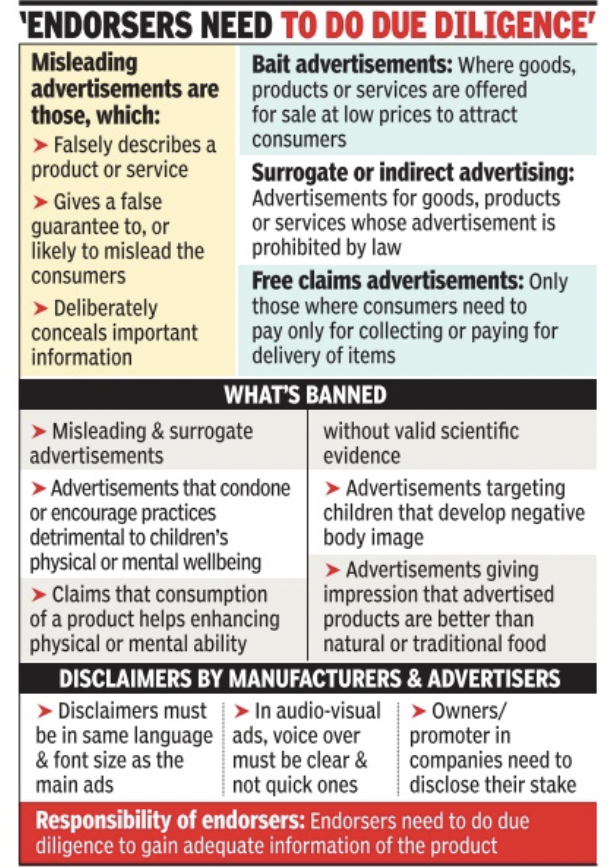
Penalty for Misleading Advertisements
- Publishing a misleading advertisement under the DOMA is punishable with up to six months imprisonment, and/or a fine for the first offence.
- Section 89 of the Consumer Protection Act, 2019 deals with punishments for false or misleading advertisements. It provides for punishment with imprisonment for a term which may extend to two years and with fine which may extend to ten lakh rupees.
{GS2 – IR – Groupings} Africa Club
- Context (DTE): The final leg of the 37th African Union Summit concluded recently with countries taking the initiative of forming the Africa Club.
- Africa Club is an Alliance of African Multilateral Financial Institutions (which are African owned and controlled).
- It aims to amplify Africa’s influence in the global financial system by aligning its functions with the SDGs and the African Union’s Agenda 2063.
- It seeks to introduce innovative financial instruments, provide a venue for debt management discussions and foster collaborative effort to address the specific needs of African countries.
- Members: African Export Import Bank, Trade and Development Bank, Africa Finance Corporation, African Reinsurance Corporation, African Trade and Investment Development Insurance, Shelter Afrique Development Bank & ZEP–RE (PTA Reinsurance Co).
|
African Union
- The African Union (AU) is a continental body consisting of the 55 member states that make up the countries of the African Continent.
- It was officially launched in 2002 as a successor to the Organisation of African Unity (OAU, 1963-1999).
- Headquarters: Addis Ababa, Ethiopia.
- The AU is the most recent recipient of ‘full member status’ to the Group of 20 (G20).
- The objectives of the AU are:
- To achieve greater unity and solidarity between African countries and their people.
- To defend the sovereignty, territorial integrity, and independence of its Member States.
- To promote democratic principles and institutions, popular participation, & good governance.
- To promote peace, security, and stability on the continent.
- To accelerate the political & socio-economic integration of the continent.
{GS2 – MoE – Initiatives} SWAYAM Plus Portal
- Context (IE): The SWAYAM Portal was recently launched by Ministry of Education.
- It will offer programs in sectors like Manufacturing, Energy, Computer Science and Engineering/IT/ITES, Management Studies, Healthcare, Hospitality, Tourism, etc.
- The platform is designed to offer employability and professional development‐focused courses developed collaboratively with industry experts such as L&T, Microsoft, CISCO, and more.
- Features: Multilingual content, AI-enabled chatbot for student assistance, and credit recognition.
- Indian Institute of Technology (IIT) Madras will be operating the ‘SWAYAM Plus’ Platform.
- Courses offered through SWAYAM Plus will be accredited & developed in collaboration with reputed industrial houses, UGC, esteemed education departments, & IITs in line with NEP, 2020.
About SWAYAM
- SWAYAM (Study Webs of Active–Learning for Young Aspiring Minds) is a programme initiated by the Ministry of Education.
- The objective is to bridge the digital divide for students who have remained untouched by the digital revolution.
- This platform hosts all the courses taught in classrooms from Class 9 till post-graduation to be accessed by anyone, anywhere at any time, free of cost to any learner.
|
{GS2 – Social Sector – Health – Issues} Rare Diseases
- Context (TH): The 19-year-old Dangal actress Suhani Bhatnagar passed away recently due to dermatomyositis.
- Rare diseases affect 1 or fewer people per 1,000 (WHO).
- Only 5% of the 7,000 known diseases have treatments. Many get only basic help to ease symptoms.
- Some need expensive medicine they can’t afford, leading to suffering and death for many.
Rare diseases in India
- India accounts for one-third of the global rare disease incidence, with over 450 identified diseases.
- Major Rare Diseases in India: Spinal Muscular Atrophy, Gaucher’s disease, Mucopolysaccharidosis type 1 and Whipple’s disease.
- A rough estimate suggests that about 8 crore-10 crore Indians suffer from one rare disease or another, and over 75% are children.
|
Challenges/Issues in tackling Rare Diseases
- Rare diseases are largely overlooked.
- Treatments approved by the Drugs Controller General of India are available for just about 20 rare diseases and can be availed only from Centres of Excellence (CoEs). Although, 50% of the 450-odd rare diseases identified in India are treatable.
- Lacks a standard definition for rare diseases.
- Lack of awareness: Physicians are generally unaware of how to interpret the signs and symptoms.
- Difficulty in Diagnosis: it takes an average of seven years for their conditions to be diagnosed.
- Inadequacy in drug development for rare diseases.
-
Inadequate Funding: The Budget’s allocation for rare diseases, although increasing over the years, remains low at ₹93 crore for 2023-2024.
- According to National policy for rare diseases (NPRD) rules, each patient can receive up to ₹50 lakh. However, for lifelong management and therapy of chronic rare diseases, this amount is inadequate.
- Issues with CoEs: CoEs are few (12) and unevenly distributed.
- Inadequate Fund utilisation by CoEs. E.g. more than ₹47 crore of the ₹71 crore financial assistance allocated to the 11 CoEs for the current year remains unused.
Way forward
-
Recommendation for the Central government
- Frame a standard definition of rare diseases.
- Increase budgetary outlays.
- Develop dedicated funding for drug development and therapy.
- Increase the number of CoEs.
-
Recommendation for the State governments
- Must introduce social assistance programmes.
- Develop satellite centres under the CoEs.
-
Recommendation to increase Funding
- Public and private companies could be co-opted for funding.
- CSR initiatives and partnerships can be leveraged to meet shortfalls.
-
Recommendations to address the issue of exorbitant drug prices and availability
- The government must incentivise domestic manufacturers under the Production-Linked Incentive Scheme.
- Reduce clinical trial requirements in appropriate cases.
- Explore options such as repurposed drugs and bulk import.
- Need to withdraw GST on life-saving drugs.
-
Other Recommendations
- Healthcare professionals must be trained to improve their diagnostic accuracy.
- Expectant mothers with a history of rare diseases in their family must undergo mandatory pre-natal screening and post-natal diagnosis.
To know more on National Policy for Rare Diseases visit >National Policy for Rare Diseases 2021.
{GS3 – S&T – AI} Need for Regulating AI
- Context (IE): The lack of a unified global framework for overseeing AI, coupled with the absence of national-level regulatory measures, poses a significant risk to national security and sovereignty.
- I, Robot, a collection of nine short stories by science-fiction writer Isaac Asimov, also underscores the same issue.
- The book examines the moral and ethical issues related to robotics and artificial intelligence.
- The book highlights the importance of ethical standards and security measures in AI development.
Characteristics of AI posing challenges
- Algorithms used in AI are devoid of national allegiance or moral judgment.
- The borderless nature of AI.
- Lethal Autonomous Weapons Systems (LAWS) can act independently.
- AI systems might get hacked, causing big problems.
- AI can act unpredictably.
- AI can do advanced cyberattacks.
Why AI is a threat to National Security?
AI is changing the idea of sovereignty
- Traditional laws don’t control new digital spaces created by AI.
- This shift affects how countries handle their digital areas and AI.
- Nations with less AI development might depend on advanced ones, risking control in areas like defence and healthcare.
- Also, power is moving from countries to private tech and individuals in these digital spaces, challenging state authority and potentially changing global politics.
AI can impact democracy
- Foreign powers can use AI to manipulate information and influence public opinion.
- It has the potential to generate large-scale disinformation, triggering tensions and electoral conflicts.
- Foreign powers can use AI for sophisticated influence campaigns, making divisions worse and weakening democratic systems.
- It could be misused by authoritarian regimes, terrorists, and organised crime groups, causing significant harm.
Threats due to Lethal Autonomous Weapons Systems (LAWS)
- Equipped with advanced AI, these systems (LAWS) can act independently, potentially leading to unintended conflicts and targeting errors.
- There’s a risk of hacking or malfunctions, causing catastrophic incidents.
- Ethically, the use of LAWS challenges humanitarian principles by lacking human oversight.
- The reliance on algorithms may risk civilian lives and violate international norms.
- The proliferation of LAWS could trigger an arms race, increasing warfare accessibility and undermining global peace.
- Lack of regulation allows non-state actors to use these systems for terrorism or insurgency.
AI’s potential for sophisticated cyberattacks poses a direct threat to national security
- AI-powered methods like advanced persistent threats and spear phishing can disrupt critical infrastructures, risking the stability and functioning of a state.
- These disruptions not only pose immediate security risks but also threaten the economic and social well-being of nations.
- The challenges extend beyond physical borders, as cyberattacks can originate from anywhere, making it challenging to safeguard national interests.
Way forward
- There is an urgent need for a strong global AI governance body to ensure its developments benefit humanity.
- Additionally, it is crucial to develop and update national regulations specifically addressing AI’s unique threats to sovereignty and national security.
- Nations need to reassess their cybersecurity strategies and invest in advanced defences to safeguard against AI-enhanced threats.
{GS3 – S&T – Biotech} Discovery of Obelisks
- Context (TH): Researchers recently discovered obelisks, which are biological entities within the human mouth and gut.
- Next-generation sequencing (NGS) was employed to analyze existing datasets from human microbiomes, facilitating the discovery of obelisks.
|
What are Obelisks?
- Obelisks are circular bits of genetic material containing one or two genes, self-organizing into a rod-like shape.
- The Obelisks’ genetic sequences are only around 1,000 characters (nucleotides) in size.
- They are made of RNA and proteins which facilitates self-replication within bacterial cells. Obelisks rely on microbial host cells, possibly bacteria or fungi, for replication.
- Obelisk genes perform identical functions across diverse bacterial strains.
- They are capable of vertically propagating from parent to offspring cells along with the host bacteria.
- Integrate loosely into the bacterial genome without disrupting standard cellular mechanisms.
- Obelisks fall between viruses and viroids in terms of classification.
- Similar to viroids, obelisks are circular single-stranded RNA genomes without a protein coat.
- Like viruses, obelisks contain genes predicted to code for proteins.
What is the difference between viruses and viroids?
| Features | Viruses | Viroids |
| Structure | Nucleic acid core (DNA or RNA) surrounded by a protein coat (capsid) | Short, circular RNA molecule (250-400 nucleotides) |
| Living or Non-Living? | Non-living;
lack cellular structures and independent metabolic processes |
Non-living;
lack protein coats and protein-encoding capability |
| Replication | Require host cells for replication, hijack host machinery | Replicate within host cells using cellular enzymes |
| Genetic Material | DNA or RNA | RNA |
| Protein Synthesis | Do not synthesize proteins independently; rely on host cells | Do not encode proteins |
| Pathogenicity | Infect animals, plants, and other organisms | Infect plants and cause plant diseases |
| Examples | Influenza virus, HIV, SARS-CoV-2 | Potato spindle tuber viroid, Coconut cadang-cadang viroid |
To know more about Viruses and Viroids, refer to PMF IAS CA June 5, 2021.
{GS3 – S&T – Biotech} Mushrooms into Gold Nanoparticles
- Context (IE): Researchers in Goa have successfully synthesized gold nanoparticles from mushrooms of the Termitomyces species, locally known as ‘roen olmi’.
- This discovery pioneers the use of an eco-friendly species for mass production of gold nanoparticles.
Termitomyces
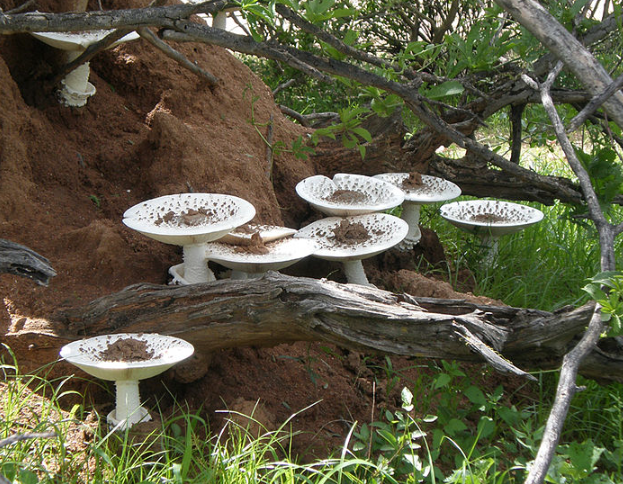
- Termitomyces is a fungi belonging to the family Lyophyllaceae.
- It is the largest edible mushroom in the world, and its cap reaches 1 metre (3.28 ft) in diameter.
- These mushrooms are often associated with termite nests or mounds, where they grow in symbiotic relationships with termites.
- They are commonly found in regions with warm and humid climates, such as tropical forests and savannas.
- They contain bioactive compounds with antioxidant, antimicrobial, and immunomodulatory properties, which may have health benefits.
Gold Nanoparticles
- Gold nanoparticles are tiny particles of gold that range in diameter from 1 to 100 nanometers.
Properties
- Optical Properties: Gold nanoparticles display vibrant colours ranging from red to purple, depending on their size and shape. This phenomenon is known as surface plasmon resonance.
- Electronic Properties: They possess excellent electrical conductivity, making them useful in electronics and sensor applications.
- Chemical Properties: Gold nanoparticles have a high surface area, which enhances their reactivity and makes them suitable for catalysis and surface chemistry.
Applications
- Electronics: Nanoscale gold nanoparticles are being used to connect resistors, conductors, and other elements of an electronic chip.
- Photodynamic Therapy: Near-IR absorbing gold nanoparticles produce heat when excited by light at wavelengths from 700 to 800 nm. This enables these nanoparticles to eradicate targeted tumors.
- Therapeutic Agent Delivery: Therapeutic agents can be coated onto the surface of gold nanoparticles due to their large surface area-to-volume ratio.
- Sensors: Surface enhanced Raman spectroscopy, exploit gold nanoparticles as substrates to enable the measurement of vibrational energies of chemical bonds.
- Probes: Gold nanoparticles also scatter light and can produce an array of interesting colors under dark-field microscopy. The scattered colors are currently used for biological imaging applications.
- Diagnostics: Gold nanoparticles are also used to detect biomarkers in the diagnosis of heart diseases, cancers, and infectious agents.
{Prelims – Envi – Species} Baleen Whales
- Context (TH): Scientists discover the anatomy behind the songs of baleen whales.

- Baleen whales, also known as mysticetes or whalebone whales, are a group of 14 species of carnivorous marine mammals.
- Baleen whales are so named because they have bristles (baleens) inside their mouth in which their prey gets stuck.
- There are 14 species of baleen whale including the blue, bowhead, right, humpback, minke and gray whale.
- Unlike toothed whales, the baleen whales have no teeth. Instead, these gentle giants utilize plates of baleen in their mouths to trap and consume their tiny prey.
- Size: They vary in size depending on the species. They can range from 30 feet (9 meters) to over 100 feet (30 meters) in length, with the blue whale being the largest known animal on Earth.
- Baleen whales of the northern hemisphere are usually slightly smaller than their counterparts in the southern hemisphere.
- Range: Baleen whales are found in oceans worldwide, from the Arctic to the Antarctic.
- They use vocalizations to mediate their complex social and reproductive behaviours in vast, opaque marine environment.
{Prelims – In News} Jamaat-e-Islami banned under UAPA
- Context (HT): Centre bans ‘Jamaat-e-Islami Jammu Kashmir’ for five more years under UAPA.
- The outfit was first declared an ‘Unlawful Association’ in 2019.
- Reason cited: The outfit is continuing to be involved in fomenting terrorism and anti-India propaganda for fuelling secessionism in J&K, which is prejudicial to the sovereignty, security and integrity of India.
- The Unlawful Activities (Prevention) Act (UAPA) is an anti-terror act enacted in 1967.
- The original Act dealt with “unlawful” acts related to secession.
- The 2004 amendments expanded the scope, and anti-terror provisions were introduced.
- It was strengthened by the government by the amendments in 2008, 2012 and 2019.
To learn in depth about UAPA, visit >Unlawful Activities (Prevention) Act (UAPA)
{Prelims – In News} Women Exporters in the Digital Economy Fund
- Context (WTO): International Trade Centre (ITC) and WTO launched a USD 50 million global fund called Women Exporters in the Digital Economy (WEIDE) Fund.
- Objective: It will help women-led businesses and women entrepreneurs in developing economies and least-developed countries adopt digital technologies and expand the online presence of their enterprises.
- The UAE allocated USD 5 million to the Fund as its first donor.
International Trade Centre (ITC)
|
{Prelims – PIN World – Europe} Belgium recognises Ecocide
- Context (DTE): Belgium becomes the first in the European Continent to recognise Ecocide as both a national and international crime.
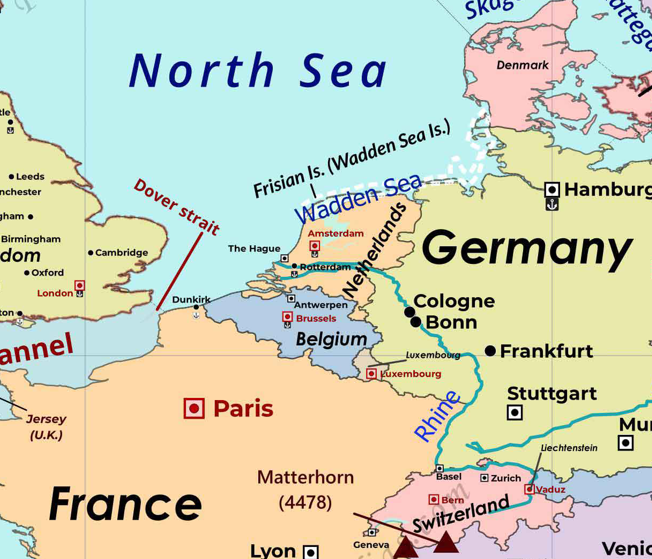
- Belgium, officially the Kingdom of Belgium, is a country in Northwestern Europe.
- Capital: Brussels
- It is bordered by the Netherlands to the north, Germany to the east, Luxembourg to the southeast, France to the south, and the North Sea to the west.
- It is one of the six founding members of the European Union, and its capital, Brussels, is also the de facto capital of the European Union itself, hosting the official seats of the European Commission, the Council of the European Union, and the European Council, as well as one of two seats of the European Parliament (the other being Strasbourg).
- It is a founding member of the Eurozone, NATO, OECD, and WTO.
- It also hosts the headquarters of many major international organizations, such as NATO.
- Belgium is a federal and constitutional monarchy.
- It is divided into two main linguistic and cultural regions: Flemish (Dutch)-speaking Flanders and French-speaking Wallonia.





![PMF IAS Environment for UPSC 2022-23 [paperback] PMF IAS [Nov 30, 2021]…](https://pmfias.b-cdn.net/wp-content/uploads/2024/04/pmfiasenvironmentforupsc2022-23paperbackpmfiasnov302021.jpg)
